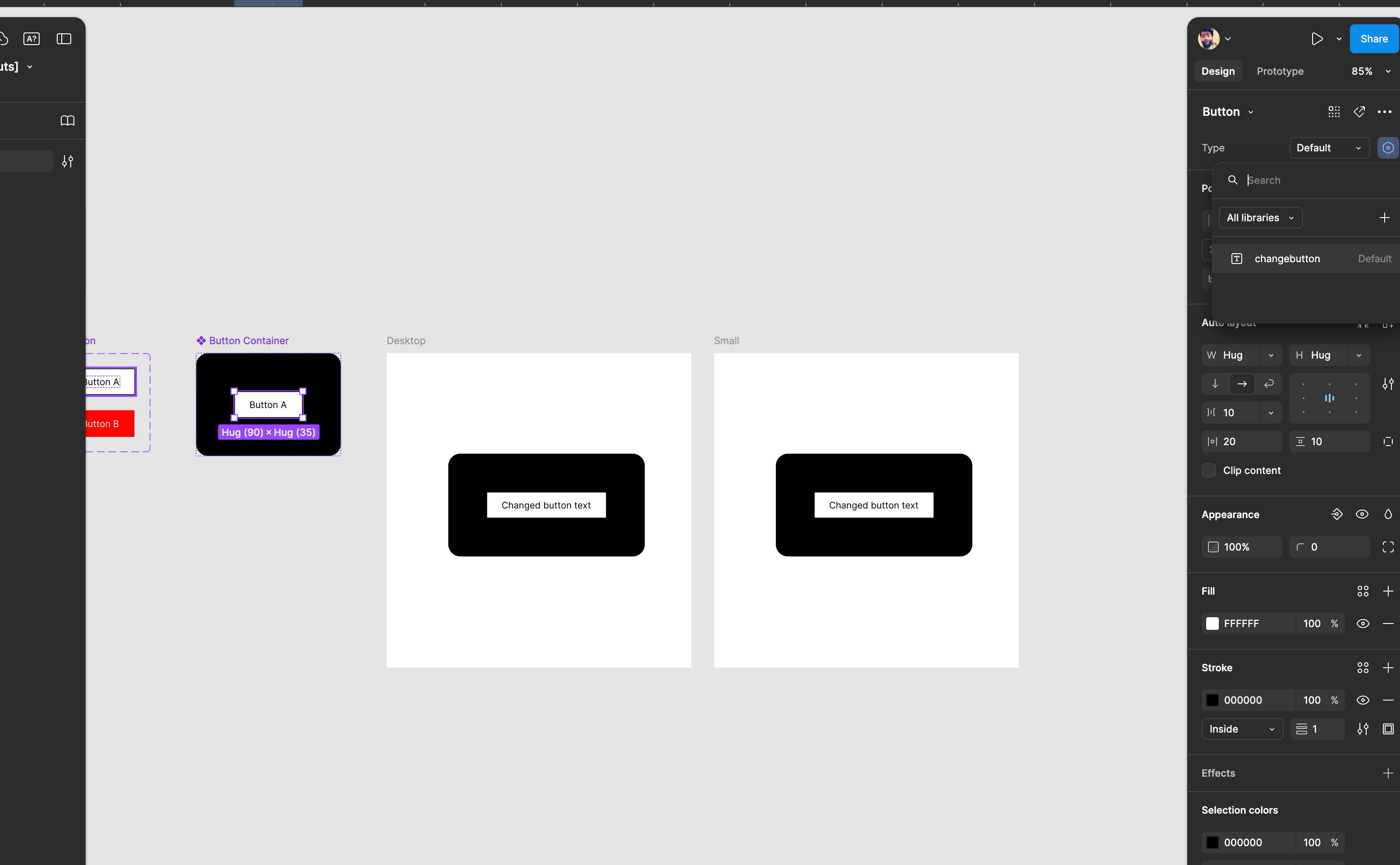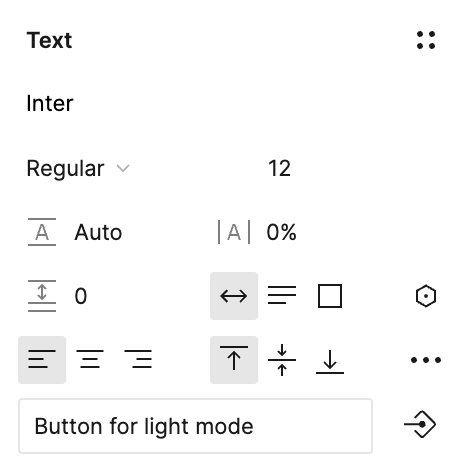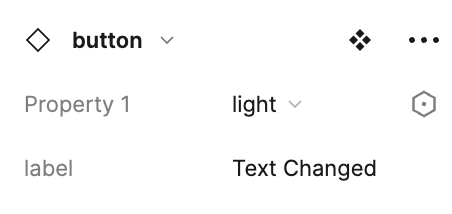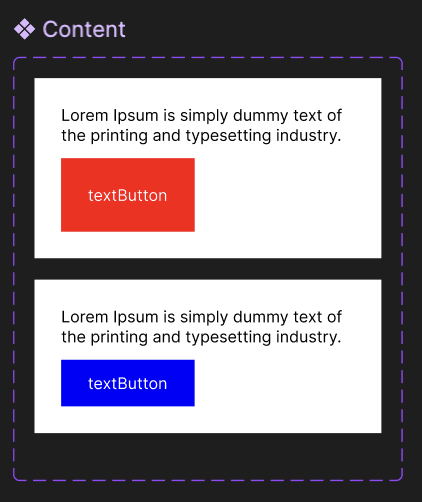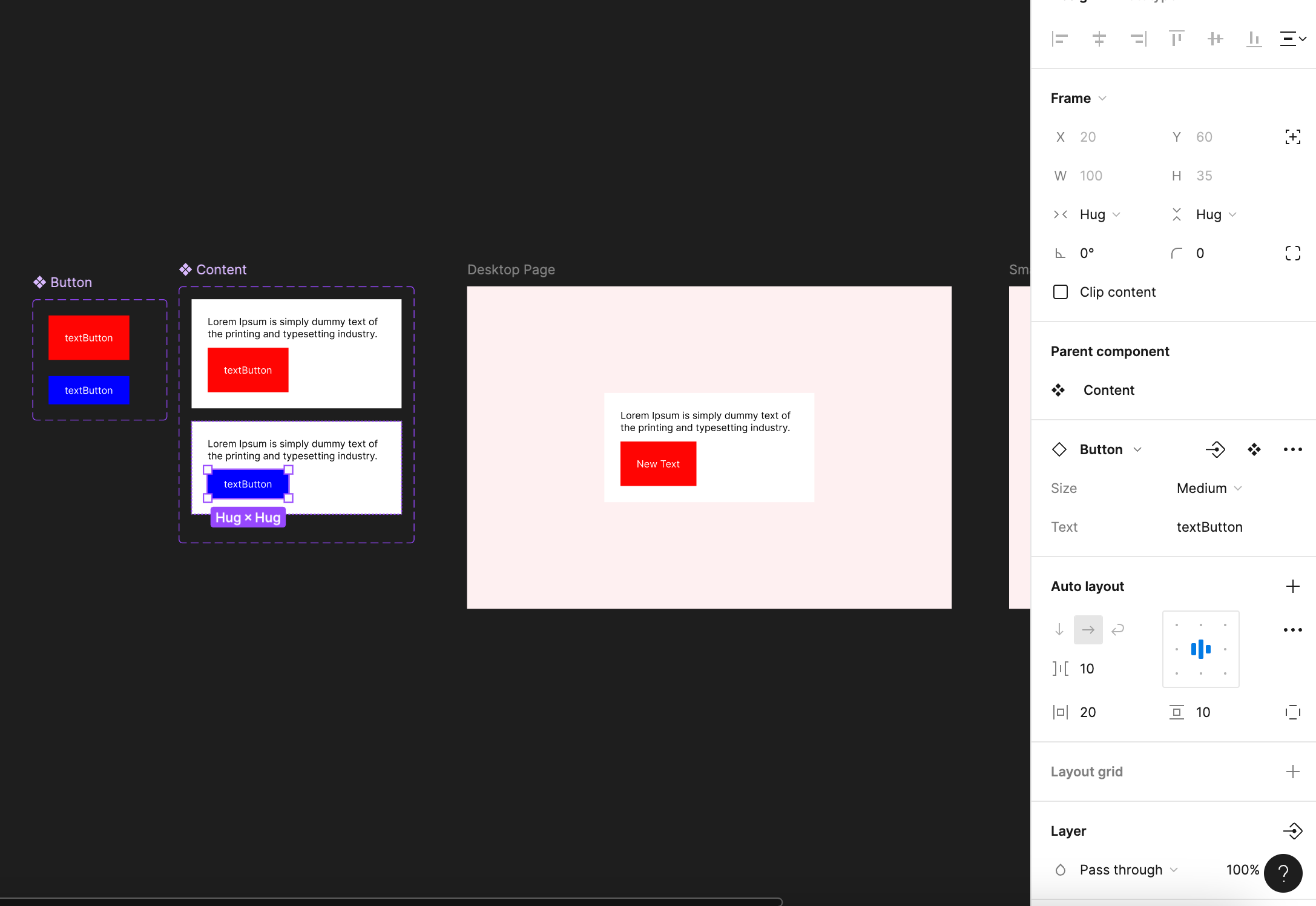Hello everyone.
I created a button with two variants. I added this button to a content container.
and added this content container to my desktop screen.
I changed the text of the button in the content container I added to my desktop screen.
then when I added this content container to my mobile screen, the text of the button did not change.
What am I doing wrong? Why isn’t the text of the button being moved?
Screenshot Video is below 👇

